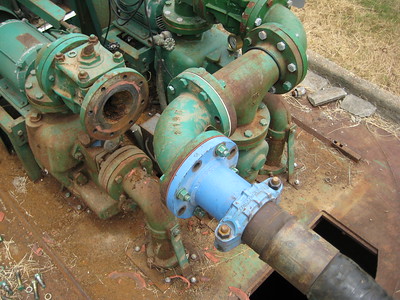Twice in the last six weeks, Washtenaw Community College discharged raw sewage into the stormwater retention ponds on campus. Two separate failures in the sanitary system on campus each produced a sewage discharge.
WCC reported the first spill to the Michigan Department of Environment, Great Lakes, and Energy as required. According to the first report, the initial sewage discharge on October 26 released an estimated 10,000 gallons of contaminated water into the stormwater drainage system on campus. That system drains to Swift Run Creek and eventually to the Huron River. The first spill closed the campus for a day.
The second sewage discharge occurred on November 7 and closed the campus for two days. According to the college – as reported in MLive – it reported the spill right away. According to the State of Michigan, WCC reported the spill on November 14. (I’m sure there’s a perfectly valid explanation for the discrepancy.) WCC personnel estimated that the second failure discharged an additional 3,000 gallons of raw sewage.
Temporary solution to avoid additional sewage discharge
At the Board of Trustees meeting on November 15, the Administration asked the Board to approve a temporary repair to the sewer system at a cost of $112,000. (I bet that’s going to blow a hole in WCC’s $300,000 maintenance budget.) The permanent repair requires a complete redesign and replacement of the sanitary sewer system on campus.
According to the Board motion, the sewer system on campus failed for a “… number of reasons: pipe corrosion, original installation methods, and pressure caused by the pumping lift station…”
Cast iron – which the WCC sanitary system apparently uses – has a rated life of between 50 and 100 years, depending on a lot of things. WCC’s current campus is about 52 years old. If the failed pipes are original to the campus, they’re in the failure zone. Someone should have known that.
I don’t know what the “original installation methods” refers to but having recently replaced the sewer lateral to my home (originally installed in 1962), I can say that the “original installation methods” were sketchy, at best.
The last item caught my eye: “pressure caused by the pumping lift station.” It’s an odd statement because pumping lift stations are supposed to generate enough pressure in the system to move effluent when gravity flow is not possible. Verifying the pressure of the lift station is part of normal maintenance. I have seen maintenance recommendations from manufacturers to check the pressure in lift stations weekly. Other manufacturers recommend quarterly pressure readings. Additionally, the manufacturers typically recommend a regular schedule of cleaning to ensure that debris does not interfere with the operation of valves and lines connected to the lift station.
TRY SPENDING MORE ON MAINTENANCE!
The sewage discharge explanation in the Board packet implies that the lift station was operating under increased pressure. (Increased pressure can be an indicator of a blockage.) Was the lift station being maintained per the manufacturer’s recommendations? If yes, the resulting sewage overflows should never have happened. If no, then we’ve found the problem.
So, were these discharges the result of WCC’s chronically starved maintenance budget? Would the taxpayers get a better result if the Administration devoted slightly more than one half of one percent of the WCC property tax collection each year to facilities maintenance? (For comparison purposes, the Administration spends 3.7% of the annual property tax collection on Executive Management.)
The community deserves a more complete, transparent explanation of why the campus that collected $63M in tax dollars this year spilled 13,000 gallons of shit into the river. We deserve an explanation for why this administration devotes less than $5,000 per million to campus maintenance but spends more than $37,000 per million on executives who refuse to take care of the facilities. Finally, if WCC has $112,000 to spend on a temporary emergency repair, doesn’t that mean that WCC had $112,000 to spend on preventative maintenance?
Photo Credit: robmcbell , via Flickr






















